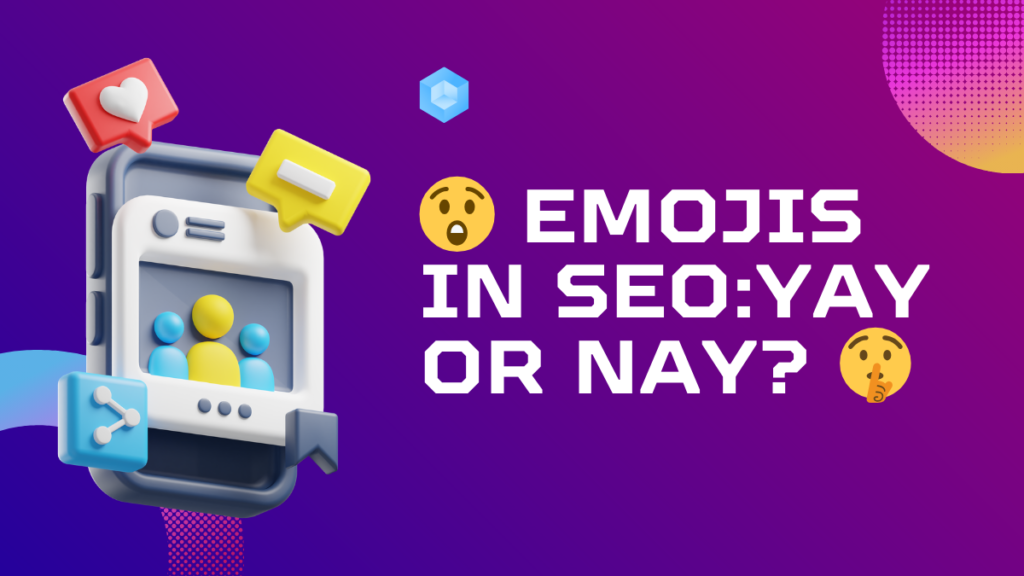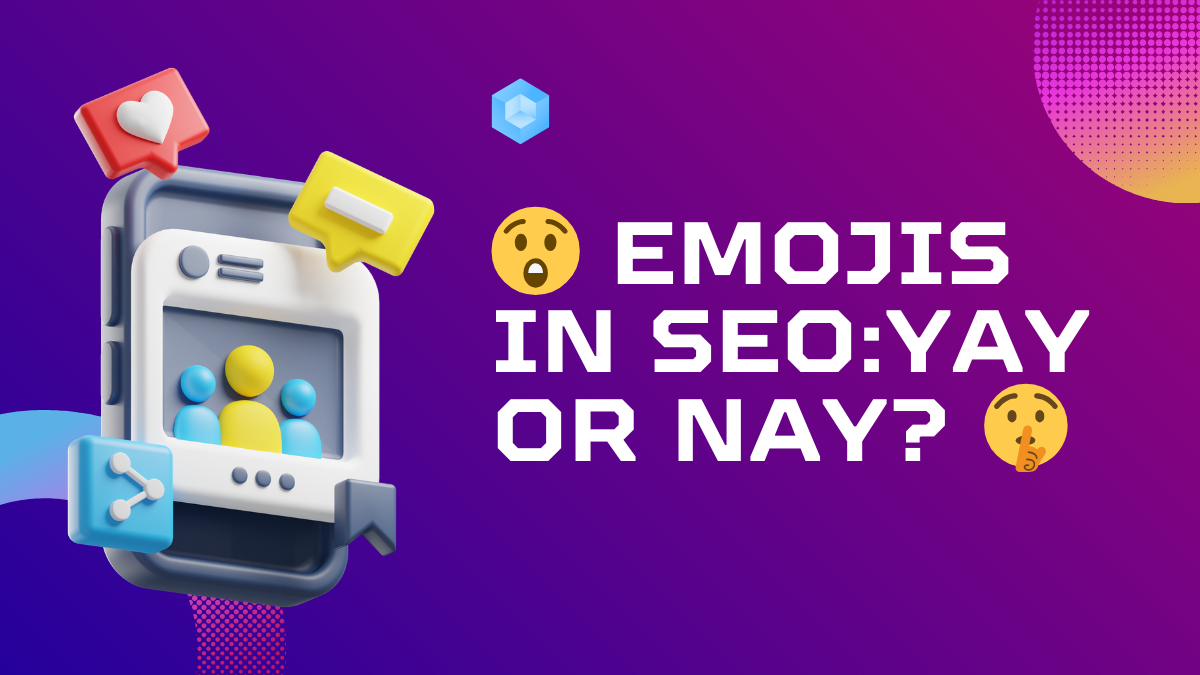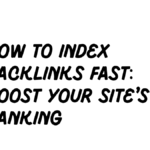Emojis – those colorful little icons that express everything from joy 😃 to confusion 😕 – are everywhere these days. You see them in texts, social media posts, and even emails. But what about using emojis in your website’s SEO strategy?
Can these fun little symbols actually help your pages rank higher in search results? Or are they a risky distraction that could actually hurt your SEO efforts?
In this comprehensive guide, we’ll dive deep into the world of emojis and SEO. We’ll explore the potential benefits and drawbacks, share best practices and real-world examples, and help you decide if adding a touch of emoji flair to your SEO strategy is right for you. ✨

Understanding the Emoji Phenomenon
Emojis have become a universal language that transcends cultural and language barriers. They add personality, emotion, and visual appeal to written communication, making it more engaging and relevant.
In the context of SEO, emojis can serve several purposes:
- Attention Grabbers: Emojis can make your search result listings stand out in a sea of text, attracting users’ attention and potentially increasing your click-through rate (CTR).
- Emotional Connection: Emojis can convey emotions and tone, helping to forge a connection with your audience even before they click on your link.
- Branding: Emojis can reinforce your brand identity and create a memorable impression.
Emojis in Meta Titles and Descriptions
Your meta title and description are prime real estate for emojis. These snippets of text appear in search results and play a crucial role in attracting clicks.
Example: Meta Title with Emoji
Let’s say you have a blog post about the best hiking trails in Yosemite National Park. Here’s how you could use an emoji in your meta title:
🌲 Yosemite Hiking Trails: Top 10 Must-See Hikes 🥾
The emojis help the title stand out and convey the topic at a glance.
Example: Meta Description with Emoji
For the same blog post, your meta description could look like this:
Discover the 10 most breathtaking hiking trails in Yosemite National Park. 🏞️ From beginner-friendly strolls to challenging summits, this guide has it all.🥾 Start exploring today! 🌄
Emojis in Slugs: A Cautionary Tale
Slugs are the part of a URL that identifies a specific page or post. While it might be tempting to add emojis to your slugs, it’s generally not recommended for SEO purposes. Emojis can cause technical issues, make URLs difficult to share, and potentially confuse search engines.
Best Practices for Using Emojis in SEO
- ملاءمة: Only use emojis that are relevant to your content and target audience.
- الاعتدال: Don’t go overboard with emojis. A few well-placed ones can be effective, but too many can look spammy.
- Testing: Experiment with different emojis and track your CTR to see what works best.
- Compatibility: Make sure your emojis display correctly on different devices and browsers.
Tools and Resources
- Emojipedia: A comprehensive resource for finding and understanding emojis.
- Yoast SEO: A popular SEO plugin that allows you to add emojis to your meta titles and descriptions.
- وحدة تحكم بحث جوجل: Monitor your search performance and track the impact of using emojis.
Is It Worth the Risk? 🤷♀️
The decision of whether or not to use emojis in your SEO strategy ultimately depends on your brand, audience, and goals. If you’re targeting a younger demographic or a niche that embraces emojis, they could be a valuable tool. However, if you’re in a more formal industry or your audience is less emoji-savvy, it’s best to err on the side of caution.
الأسئلة الشائعة
- Do emojis directly impact SEO rankings? There’s no evidence that emojis directly influence rankings. However, they can indirectly boost SEO by increasing CTR, which is a positive signal to search engines.
- Which emojis are best for SEO? The best emojis are those that are relevant to your content and resonate with your audience. Consider using emojis that convey emotions, actions, or objects related to your topic.
- Can I use emojis in my website’s body content? Yes, but use them sparingly and only when they enhance the meaning of your text.
- Are there any SEO risks associated with using emojis? Overusing emojis or using irrelevant ones can make your content look spammy and unprofessional.
- In my social media posts, should I use emojis? Absolutely! Emojis are a great way to add personality and engagement to your social media posts.
خاتمة
Emojis have the potential to add a touch of personality and fun to your SEO strategy, but it’s important to use them wisely. By following best practices, testing, and monitoring your results, you can determine if emojis are a good fit for your brand and audience.
If you’re ready to experiment with emojis in your SEO efforts, start by adding them to your meta titles and descriptions. Keep an eye on your CTR and see if you notice any improvements. And remember to enjoy yourself while you do it! After all, emojis are meant to express yourself. 😊



